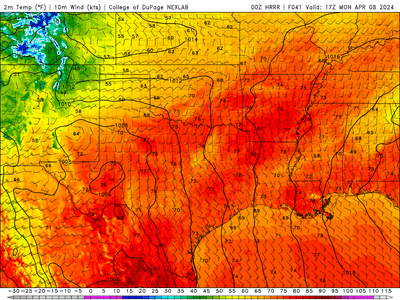Dan Robinson
EF5
Latest models maintain the trend of that leading warm air advection arc of clouds inching farther northeast. Surely there will also be some cirrus ahead of that. If that keeps up, I don’t see *any* good options. I’m heading northeast today, but pretty pessimistic. I can get back to Ohio potentially if there is a better break there behind the WAA arc.


